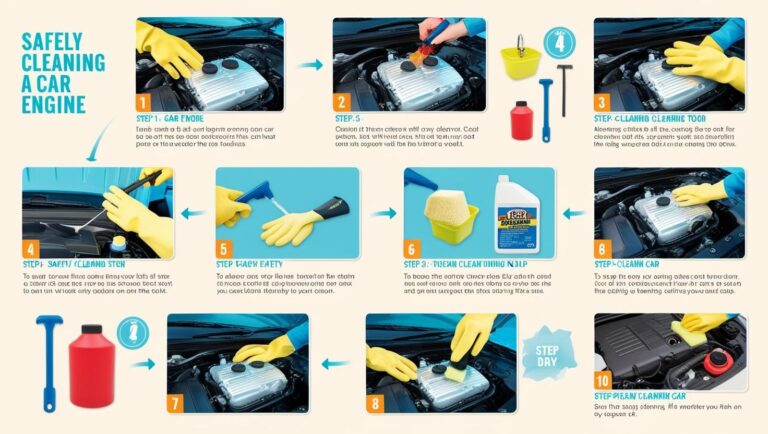Maintaining your car engine involves more than just regular oil changes and servicing. A clean engine can lead to improved performance, longevity, and can help you spot potential issues early. While it might seem daunting, cleaning your car engine safely is an achievable task with the right guidance. This article will outline essential tips and provide a step-by-step guide to ensure your engine remains in pristine condition without compromising its integrity.
Essential Tips for a Pristine Car Engine
Cleaning your car engine is an underrated aspect of vehicle maintenance, often overlooked due to the complexity and potential risks involved. However, with a few essential tips, you can maintain a pristine engine without causing any damage. First and foremost, always ensure your engine is cool before starting the cleaning process. A hot engine can not only cause burns but may also lead to the cracking of certain components when exposed to water. Patience is crucial; allowing the engine to cool down completely can save you from potential mishaps.
Another essential tip is to cover sensitive components such as the alternator, air intake, and any exposed wiring. Use plastic bags or specially designed covers to shield these areas from moisture. Water can cause electrical shorts or corrosion, leading to costly repairs. Additionally, it’s wise to disconnect the battery terminals for added safety. This small precaution can prevent electrical accidents and protect the car’s sensitive electronics.
When choosing cleaning products, opt for non-corrosive, biodegradable detergents specifically designed for engine cleaning. Harsh chemicals can damage engine components and potentially void warranties. A mild degreaser can efficiently remove grime without harming delicate parts. Remember, the goal is to clean, not to damage. Always follow the manufacturer’s instructions for any product used and test it on a small area first to ensure compatibility with your engine.
Step-by-Step Guide to Engine Cleaning Safety
Start your engine cleaning process by assembling the necessary tools and materials. You’ll need a plastic bag to cover sensitive parts, a quality engine degreaser, a scrub brush, and a hose or pressure washer. Begin by covering the battery, alternator, and air intake to prevent water ingress. Disconnecting the battery is recommended to enhance safety and minimize the risk of electrical issues during the cleaning process.
Apply the engine degreaser generously, covering all dirty or greasy areas of the engine. Allow it to sit for the recommended time on the product label, usually around 5-10 minutes. This allows the degreaser to break down the accumulated grime effectively. Use a scrub brush to agitate the dirt and grease on stubborn areas. Avoid using wire brushes as they can scratch or damage engine components. Instead, opt for brushes with stiff bristles designed for delicate surfaces.
Once the degreaser has done its job, rinse the engine thoroughly with a low-pressure spray. Avoid high-pressure washes as they can force water into electrical connections, leading to potential malfunctions. Ensure all cleaning agents are fully rinsed off, leaving no residue behind. After rinsing, use a microfiber cloth to dry the engine bay, paying close attention to any areas where water might accumulate. Reconnect the battery and remove the protective covers, ensuring everything is back in its place. Start the engine and let it run for a few minutes to ensure everything is in working order.
A clean engine is not only aesthetically pleasing but also contributes to the overall efficiency and longevity of your car. By following these essential tips and step-by-step instructions, you can safely maintain your engine’s cleanliness without risking damage. Regular cleaning helps to reveal hidden issues, making it easier to maintain your vehicle in peak condition. Remember, safety first; always cool the engine, protect sensitive components, and use appropriate cleaning products. With consistent care, your car will continue to perform optimally for years to come.


















